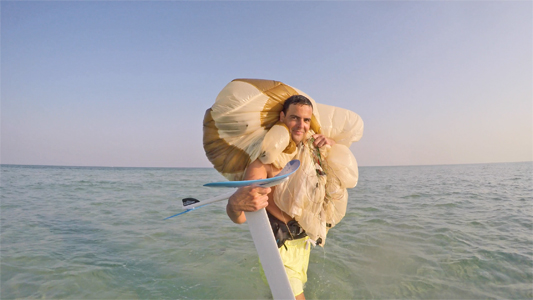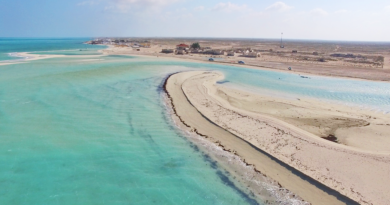Outboard engine size for foiling behind a dinghy
When we moved onto our sailboat permanently, we pictured ourselves kiteboarding and kitefoiling every day. But then, we sailed to Alanya, Turkey, a serene spot with probably the least wind on earth! So we became a little desperate and were looking for ways to keep our board skills up. In the end, the solution came in the form of a bigger outboard engine for our dinghy. But what engine size would be big enough to tow me on my foilboard behind the dinghy at a good speed? And what about using a regular kiteboard, without foil. Would that work? You’ll probably know that regular boards create so much more resistance, so you might need a bigger engine still!
I googled, looked around, asked for test rides all around the marina, but got quite limited information. And that’s how this little write-up was born. We need to get it out there, that this setup works!!
Because I could not establish beforehand what engine size would be big enough, I got the biggest outboard engine that the dinghy could take, a 20 HP 4-stroke Mercury outboard. I also decided to get a long shaft model, which was a mistake, but more about that in this youtube video. The shaft length you need, depends on your boat.
In any case, is the 20 HP 4-stroke engine powerful enough?? Yes it is!! Let me run you through the details of our setup, so you can compare if yours could work as well.
We have a 330 cm, hard bottom, inflatable dinghy. Our rider weight (myself), is 100 kg’s. The board we use is a North, with a medium size wing. It’s not a super slow big wing either, the wing itself really needs a bit of speed to start flying. If you want more details, I can get those of course.
Now to waterstart behind the dinghy on the foil, we do have to go about full throttle initially, to get the rider up on the water. As soon as that happens, we throttle back to about half throttle I would guess, and then adjust the speed as needed. The throttling back is of course because as soon as the rider is up, the resistance reduces drastically. If not taking throttle back, you would accelerate way too fast. And the rest is up to you, it all depends on the rider and boat driver skills!
We also tried the same setup with a regular kiteboard, which has lots more drag at all times obviously. I didn’t get a chance to try this myself yet, but my friend at his weight of 80 kg’s, got up on the board on the second attempt. And he did have previous kiteboarding experience, just not on a foil. Once up on the kiteboard, accelerating further was easy, not problem at all. Only on the first attempt, we tried for a good 10 seconds at full throttle, but he didn’t get up out of the water, so we never managed to accelerate enough. As the second attempt was succesful, I would just write this down to technique used. Hopefully I’ll get to try the regular kiteboard myself soon too!
If you want to see what our setup looks like, it’s all in the video below! That plus more info on choosing the right outboard type and size for your needs. And that’s basically what I wanted to share here. There was so little info on this subject to be found.. It made it really hard for me to decide which outboard engine to buy! I hope this bit of info will help other kiters who find themselves stuck with a dinghy, but no wind around..! If so, be sure to let me know with a comment on Youtube or a message on one of our social channels.
Ah, another major factor we found, is the smoothness of the water. Kind of makes sense, but as a kitesurfer you probably don’t worry about that too much. The issue is, that the dinghy needs to be moving at good speeds when towing. And that quickly becomes really uncomfortable for the driver, when the water is not nice and glassy. The best time for a tow session could well be nice and early in the morning, after a windless night.. Just something to keep in mind!


